|
The year my father died, all I wrote was three essays about his death. And then they sat--I couldn't bear to revise any of them for a long time.
Finally, after years passed, I took out two of them and worked on them. The third I still can't face. The Dirty Spoon, a radio show about food, has published one of those essays, "Tracking Every Spoonful," and aired it on their August 2 broadcast. They've also posted the audio of the professional reader in their Episode 13 podcast (my essay starts just before the 47-minute mark). The essay describes the time near my father's death when we were trying to get him to eat. As it happened, the day it was first broadcast, I was on the road to Southern California. We stopped for sandwiches in the high desert. While waiting, I checked my email, which contained a message about the essay going live. I clicked the link to the essay text. As soon as I saw the illustration, I started to cry, right there in the Subway. We got to my in-law's house about the time the broadcast started. I sat on the bed, listening it stream on my computer. My essay was last. This time, I was prepared for the tears. The reader read my words beautifully. When we visit my husband's parents, we always bring food so that they don't have to cook for us. That morning, I'd woken up early to make a nectarine crisp from nectarines off our tree. I also brought some homemade black bean soup from our freezer So for dinner that night, I made a salad and heated up the soup while my husband warmed some jalapeno cheese bread. At dinner, I watched my husband, mother-in-law, and father-in-law enjoy the food I'd made. I reheated the crisp; the scent of cinnamon and nutmeg filled the kitchen. As we ate it, a feeling of great contentment came over me. It was a blessing, on a day when I relived the struggle to feed my father, for me to feed my family.
0 Comments
My family missed watching the moon landing.
On that July day in 1969, we weren’t home, in front of our television set. Instead, my father had borrowed a cabin in the Santa Cruz mountains from a friend and packed the family off for the weekend. We’d loaded up our board games and Tonka trucks and Herb Albert records, including the album with his big hit “This Guy’s in Love with You,” which one brother jokingly sang as “The sky’s in love with you.” We thought we had everything we needed. We didn’t discover until we arrived that the cabin had no television set. Missing the moon landing shocks me especially because my father worked on the space program. The company he worked at contracted with NASA to build communications equipment. During my childhood, Dad’s lab built antennas that sent pictures from space of weather and planets, even the surface of Mars. My family always told me the Hillesland name was on the moon. I only found out later that, instead of the commemorative plaque I envisioned, my father and uncle, along with the rest of the team, had graffitied their names on a piece of equipment destined for the lunar surface. Growing up, stories about and images of space surrounded me. But we missed those first moon landing pictures. Mind you, my recollections might not be the most reliable, because I was four in 1969. I might be conflating visits to the cabin, or imagining details. But here’s what I remember: we sat in the cabin’s living room, listening to a static-filled radio broadcast and trying to imagine what was happening. We concentrated so hard, as if we could will the pictures from the sound. But we couldn’t. Some writers' experiences give them great stories to tell. Authors might witness pivotal moments in history, or perform amazing feats, or endure great hardships. Those lives might not be comfortable to live, but they can make for great writing. Those of us who have not have those kinds of lives, though, if we write nonfiction, end up telling an alternative version, where we miss the biggest bit of televised history in the 20th century. We have to work with what we’re given. Without the big moments, we have to find the charm, humor, and meaning in what we're given instead. Fortunately, many other readers live without those big moments and can relate to the more ordinary stories. Here’s my story of the moon landing: In my memory, moving tree shadows pattern the cabin floor. I’m fascinated with the wood paneled walls—possibly the first I've seen. The cabin feels much closer to nature, much more of the earth than our house with its mown lawn and waxed linoleum floor. I can feel the weight of our listening to the broadcast, like a thick blanket thrown over the room. I don’t really understand what’s going on. In later years, I’ll watch other space missions, liftoffs moonwalks and splashdowns, but now I only know something important is happening, something I can't picture, because I've never seen it before. No one has. On the radio, Neil Armstrong is taking one giant step for mankind. But I’m distracted. I’m watching the shadows on the floor, while inside my head I’m singing “the sky’s in love with you.” I'm with the wood paneling and trees and blue sky, down on earth while big, unseen events are happening out beyond my understanding. A year or so ago, browsing in an antique store in the town my in-laws live in, I came across a decorative mirror. It was wildly embellished. Over-the-top, some would consider. But I liked it—it was unusual and beautiful. However, it was a bit pricey. And, perhaps not to everyone’s taste. To be honest, seeing it in the shop, I wasn’t sure it was even to my taste.
The next time I came to town, I looked for the mirror where it had been hanging on a back wall. Perhaps, seeing it again, I would decide if I wanted it. It wasn’t there. Someone bought it, I thought. I imagined the purchaser—a man with an apartment full of beaux arts and art deco furniture. At night he’d make cocktails in a silver shaker. When he had a party, he’d play jazz standards on a baby grand piano. However, since I visit that town several times a year, I kept an eye out for the mirror. The stock in antique stores does get moved around. Over repeated trips I’ve bought many things at this antique store: jewelry, an embellished coat, an old typewriter. I like dropping in when I visit. On my latest trip, I spent a happy hour trying on vintage hats and examining rhinestone broaches. And then, tucked in a back corner, partially hidden by an armoire, I saw it: the embellished mirror. At least I thought it was the same one: it had the etched daisies and raised flower details I remembered. And what were the chances that there were two similar mirrors in the same antique shop? I said goodbye to my mental picture of the natty man in the golden-brown cardigan and his silver cocktail shaker. Looking at the mirror again, I decided I liked it for sure. More than that, I knew I wanted it because it had lived on in my mind for so long. Some objects remain in our thoughts, even when we don’t see them. The harvest gold round pitcher my mom used to have. My grandmother’s low rocking chair with its flattened green pillow in the seat. The metal bird masks displayed in a Venetian shop window. Details live on in our thoughts too: the half-full pool at my apartment complex after a major earthquake sloshed water out, the sludgy brown of a glacier-fed stream, the heat wafting up from the pavement in front of the old Frye’s grocery store on a summer’s day. And incidents too: slipping and falling in my first pair of high heels in front of a boy I had a crush on, catching a lift back to my hotel in the back of a Bahamian road-worker’s van, watching my grandmother grabbing blueberries with her arthritic hands. All of these objects, details, incidents that linger—they are the secret engine that drives fiction. My stories are stuffed with the details that live on, the incidents I can’t shake. Sometimes I massage them beyond recognition, sometimes they’re nearly verbatim, sometimes they're merely the set decoration for an unrelated story. When I wrote a story that featured some old jewelry, my brother said he recognized some of the jewelry I wrote about, even though the elderly grandmother in the story resembled neither of our grandmothers. Whatever we write becomes a mirror reflecting the things that live on in us. And for the actual mirror? I bought it. The story I told about the jazz-playing, art deco loving man was just fiction. I may yet write it—or some other story featuring an elaborate mirror, reflecting my life. When I took an oil painting class, the instructor said that beginners painting self-portraits concentrate so hard that they end up looking angry in the finished pictures. (As you can see from my self-portrait from that class, I decided it was better to look bored. Also, I managed to make my hand freakishly large.) It’s unnerving to study your own face so closely—you can see every blemish. Did your nose always have that bump on it? And how long has it been since you plucked your eyebrows? It’s hard to see your flaws and still smile. I’ve been thinking about self-portraits recently because I started a blog about hats that necessitates posting a lot of pictures of myself on the web and social media. I keep studying the wrinkles between my eyebrows and the pouches under my eyes and mumbling that I wish I’d done the blog when I was younger and cuter.
I never thought I was very pretty. In high school I had acne, didn’t wear trendy clothes, and didn’t want to be fussing with makeup all the time. I felt better about my appearance in my 20s, but partly because I worked hard to not look like myself. I permed my fine, flat hair. I wore my contact lenses instead of glasses. I shrunk myself to a size four. Eventually, I made my peace with how I looked. My hair was straight, my eyes were bad. I could lose a few pounds. So what? But I find it harder to say “so what” when I keep looking through pictures, deciding which one to post. In the close up of a hat, I notice the gray hair creeping in. In another photo I study the lines bracketing my mouth. People Instagramming their hat pictures often have faces brushed clean of defects—unnaturally so. At first I wondered why--they aren't fooling anyone. Now I'm starting to see the temptation. But the same way I didn’t want to fuss with my makeup in high school, I now don’t want to spend my time wiping away all my wrinkles in Photoshop. One of the lessons I’ve told my nonfiction writing students is that no one wants to see the ideal you. Perfect people are boring. In my own nonfiction, I’ve tried to be honest, even when it means owning up to being a pretentious idiot at 20 or loving Lawrence Welk. My interest in clothes and hats has never been about making myself look attractive: it’s about enjoying wearing fun stuff. So I’ll try to resist the temptation to wipe the evidence of my age from my photos. After all, one of the pleasures of getting older is caring a LOT less about what others think of you. And no one is interested in perfection anyway. I'm very pleased to have my story "Angry Money" published in Dime Show Review. The journal also published my story "Two Turtledoves" a couple of years ago, and I was very happy to work with them again.
This story is another, like "After Waking," that I started, abandoned, and then finished later. I wrote an opening about a couple in a bar stealing a jacket, then I stopped. After a year or two, I found the opening and went back to the story, figuring out why they had no brakes on this particular evening. With my writing, I'm a pack rat, keeping the bits of stories and sometimes fashioning them into completed works years later. I don't know if other writers work this way, but I suspect they do. Henry James said "A writer is someone on whom nothing is lost." That's a high bar to set for observing the world. I fail often. And yet, by never throwing anything away, I superstitiously think I'll lose fewer of the observations I've made. And occasionally, I get a completed story out of it. 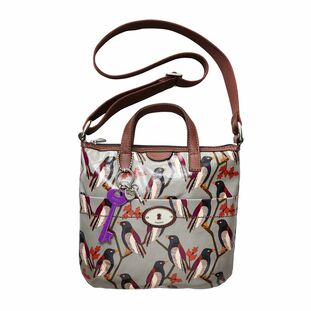 It started with a bird purse. While shopping in Macy's I saw a cute purse on the clearance table that had a pattern of birds on branches. I loved it, and even though I usually had solid black purses, I bought it. I got tons of compliments on it and always enjoyed carrying it, so when it wore out, I had a great idea: I'd buy another just like it. Unfortunately, I discovered that the maker, Fossil, had not only discontinued the purse, it had stopped making the whole line of coated canvas handbags. So I headed to eBay. No bird purse! But when I searched, I found a great assortment of purses, many "new with tags," that were made by the same company in a variety of patterns. So I bought a sixties mod-looking bag with white flowers and pink dots on a black background. This bag was a bit roomier than the last one, so I liked the size even better. Flash forward to when that bag wore out: I scouted eBay for another. I bought a pink one with a pattern like fireworks, and then, because I was about to take a trip and wanted one that would go better with the clothes I was packing, passed it over for a black purse with a design that reminded me of a Spirograph. Now that purse is wearing out, and I've bought another style, in navy with dots--which means I have two new purses to choose from. I might say I'm saving time--I've found a purse I like, and I don't have to deal with going from store to store, trying to find a new purse that suits me. I just look on EBay and order one. But am I getting in a rut?
I wrote before about my little whiteboard of story ideas--a place where I jot down story kernels for future use. The thing is, they are just kernels. For example, I have an item called "Zombie Monarchs" which refers to an article I read about how some of the monarch butterflies in the local butterfly refuge had had their bodies partially eaten by a predator, but were still flying around. One day I decided to start a story inspired by the zombie monarchs. My first thought was that I would write about a couple whose relationship was in trouble. But then I thought: don't I always write that story? Am I getting in a rut? At that time, I had recently published a few stories that had troubled relationships at their hearts: "It'll Do Motel," "I Used To," and "Lifeboat Drill." In my writing, I didn't want to be metaphorically buying the same purse over and over in a different pattern. I tried other scenarios, but nothing clicked. So zombie monarchs remains on my whiteboard, for now. Except for the story from the point of view of bees, my next published stories were all about parent/child relationships of widely differing sorts (including the hypothetical). I'm not worried about a rut right now. But I don't want to let down my guard. Repeating in fashion can be coolly "retro" but in writing repeating is just boring. As I wrote in my previous post, I've been down about my writing, so I dreaded writing this annual "year in review" posting. What accomplishments did I have to talk about? It had been a terrible year.
When I started gathering information, I checked my number of submissions for the year. Hardly any, I thought. But, to my surprise, I had logged over a hundred submissions. Huh! Not a record by any means, but still a good number. What about short fiction publications? Maybe one or two? Nope, I had five. Again, not a record, but better than I remembered. And how had I forgotten that prize I won? Discouragement not only saps us of strength, it robs us of perspective. I didn't accomplish finding an agent for my novel this year. But here's what I did accomplish:
Finishing the novel was huge for me. How had I forgotten? I think I'll have to revise the opening, but that doesn't change the fact that I finished and started sending it out. And in addition to the accomplishments above, I wrote a few stories that have yet to be published. In my disappointment over not immediately landing an agent, I'd minimized or forgotten my other accomplishments. And who knows what 2019 will bring? Maybe my new year's resolution should be to try to keep things in perspective. I hope all of you have a great 2019! I don’t like singing Bach. I’m in the minority, I know, but he seems to have only two modes: fugues with endless runs, or chorales. This year, my chorus sang Bach’s Christmas Oratorio Parts 5 and 6, and I grumbled about it. However, one fugue I truly did enjoy—it contains a dramatic moment on the line (English translation, which we sang): “Let not our faith and courage fail us.” Though the lyric is about trusting God ("Lord, when our haughty foes assail us/ let not our faith and courage fail us/ but with thy might and help be near") I find myself thinking about faith and courage in many contexts. To me, this lyric reminds me that we need to have the courage to do the work at hand and have faith that we will eventually see a good outcome. In activism, we need to have faith and courage to keep fighting for the environment, for healthcare, and for justice and equality for all. Setbacks occur, but that doesn’t mean we should give up. We need to have faith and courage in our personal relationships, to speak what we feel, making ourselves vulnerable to others so that we can be closer. In writing, I remind myself I need to have faith in my writing abilities and have the courage to keep submitting my work, even in the face of rejection. The voice in my head that says I’m not a good enough writer is a foe belittling my efforts. I need to keep faith in myself. I’ve been having trouble with that voice in my head lately. My faith in my abilities has been wavering, and my courage to keep submitting (especially the novel) has faltered. I haven’t submitted my novel to very many agents yet, but most agents don’t even respond with a no, which is disheartening. I haven’t been writing much either. However, recently I had a great tonic for my malaise: my annual writers’ group Christmas party. For many years we have had the tradition of getting each other gifts based on our writing. This year, in addition to receiving some interesting books which I’m looking forward to reading (including one from Mark Coggins), my writer friends gave me some gifts representing work I have written this year, reminding me that I have been producing new work. Referencing my story “Aces” which involves a poker game with high stakes for its participants, John Billheimer gave me a deck of marked cards. The marks are very subtle. If you play poker with me, you might want to bring your own deck 😊: Referencing my story “Roadside Shrines,” set at a highway shrine in Argentina where people leave offerings of bottle water, Anne Cheilek gave me these amazing earrings: Referencing my story “Stealing the Unicorn,” Sheila Scobba Banning gave me a giant inflatable unicorn and portable unicorn in purse: None of these stories are published yet, though I’ve started submitting a couple of them. Even though I haven’t had the most productive year, my friends reminded me that I haven’t totally lost faith and courage.
Much is out of our hands. I can’t control whether my writing gets published and finds and audience. All I can do is keep working with as much faith and courage as I can muster. And be grateful that I have good companions in the struggle. Jack Kerouak’s scroll manuscript for On the Road—or at least the first 40 feet of it--is on display a library near where I live. Kerouac typed fast and hated stopping to change paper, so he taped together a roll of paper 120 feet long and in three weeks typed the first draft of On the Road. I saw the scroll before, years ago, in San Francisco, and what impressed me then was how long it was. The narrow case seemed to go on forever. This time when I saw it, I was prepared for the long narrow case, so I took a closer look at the manuscript itself. It was yellowed and tattered and typed single space. If you want to see an image of the scroll’s opening, NPR has a nice one here: https://www.npr.org/programs/atc/features/2005/feb/kerouac/scroll.html Near the start of the scroll, the curators propped open the finished book to the novel’s beginning, making comparisons easy. Leaning over to read the scroll, I got my first jolt. The draft opening mentions “Neal” not the published version’s “Dean.” I don’t typically write autobiographical fiction (though of course all fiction has some autobiography in it), so I had assumed that Kerouac had meant from the beginning to fictionalize his journey. But here he was, straight up using Neal Cassidy’s real name. Let me just say now that I have never been in love with On the Road. I think it’s messy and half-thought-out in many places, maybe because Kerouac included too much unshaped real life. I read the book in college (I still have my paperback copy, almost as yellowed as the scroll, labeled “25th Anniversary Edition”). In that class, another student described how he’d read the book when he was 17, and that it had inspired him to travel, and was in fact one reason he was studying at Berkeley—he’d grown up in the East and wanted to go somewhere new. I, however, did not find the book so inspiring. Maybe at 20 I was already too old for it. The book seemed naïve. I remember thinking: “They go to Mexico, and smoke a big joint and go to a brothel? That’s it? That’s the ultimate vision of freedom on the road?” Also, the dismissiveness towards women in the book turned me off. Kerouac seemed mostly incapable of imagining that women had inner lives—they existed only to serve or thwart the men’s needs. And yet, the book has its lyrical passages, its unusual and well-chosen adjectives and verbs, it’s jazzy rhythm. The book contains a lot of dreck, but it also contains moments of startling beauty. So, when I look at the scroll, I see not a relic of a perfect book, but a testament to Kerouac’s sheer determination to write, to put his vision into words. He found a way to get his draft out, and that’s a huge task for any writer. Then he edited, removing words, removing paragraphs, rewriting. The scroll is not a symbol of unconstrained creativity, but of writing process working. It took me many tries to get beyond the first fifty pages of a book. When described my problem to one instructor in my MFA program, he suggested writing on smaller paper, stationery sized. He found it gave him less pressure—it didn’t seem like so much empty space to fill up. I was horrified. I hate writing on small paper because the size feel like it's hemming in my thoughts. We all have to discover our own way to get moving, to get the book out of our heads. The scroll is Kerouac’s triumph over the blank page, an inspiring achievement. Bonus: I love this clip from the Steve Allen show where Kerouac reads from On the Road while Steve plays jazz piano. Allen interviews Kerouac first—the reading starts about halfway in. For me, this kind of prose is the best part of On the Road: https://www.youtube.com/watch?v=3LLpNKo09Xk
Typehouse Literary Magazine has published my story "Meet Your Kid for Lunch" in their latest issue. You can order a print copy or read the pdf version (my story is on page 11).
Sometimes the origin of a story is mysterious. But this one is not. Like my story "Psychic Cleaners," this story was inspired by a sign. Driving home from working out one day, I saw the sign at the middle school displaying "meet your kid for lunch." Well, I thought. that would be quite a trick, as I don't have any kids. Then I thought. what if someone COULD walk into that middle school and meet the kid they never had? And so I wrote the story. |
Author
Ann Hillesland writes fiction and essays. Her work has appeared in many literary journals, including Fourth Genre, Bayou, The Laurel Review, and Sou’wester. Categories
All
Archives
February 2024
© Ann Hillesland 2015-2017. Unauthorized use and/or duplication of this material without express and written permission from this site’s author is strictly prohibited. Excerpts and links may be used, provided that full and clear credit is given to Ann Hillesland with specific direction to the original content.
|



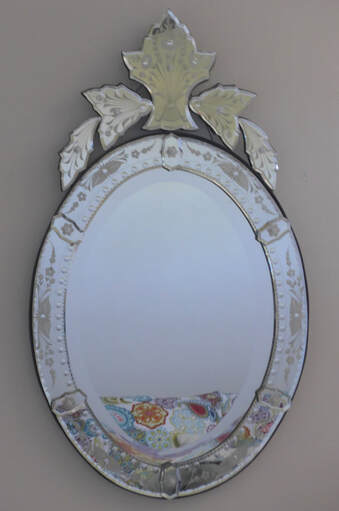
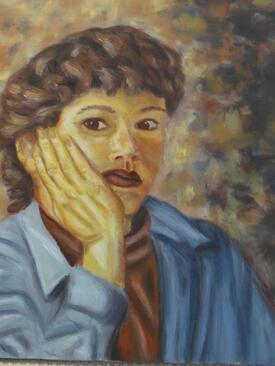

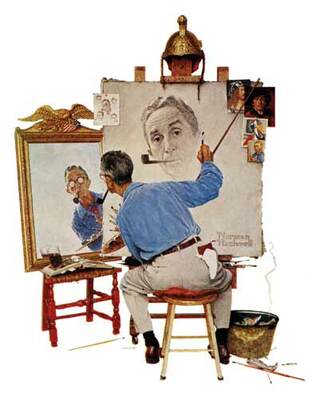
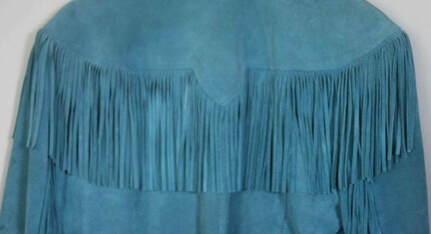

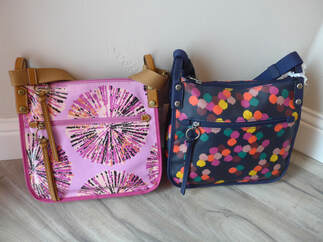

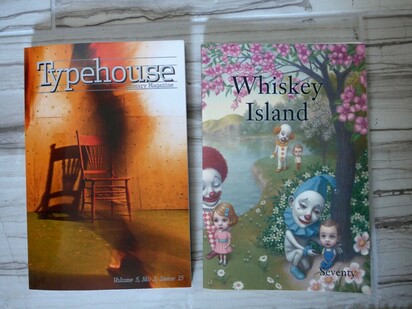
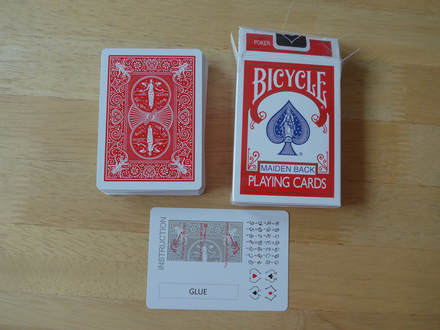
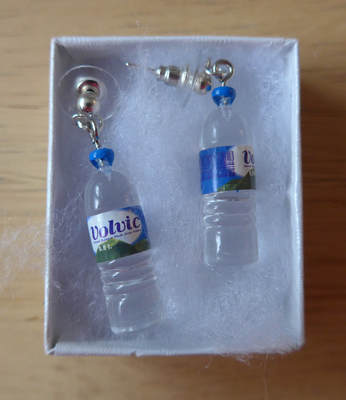
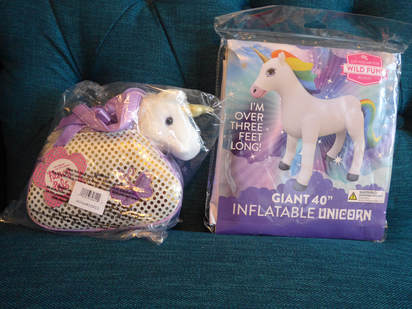
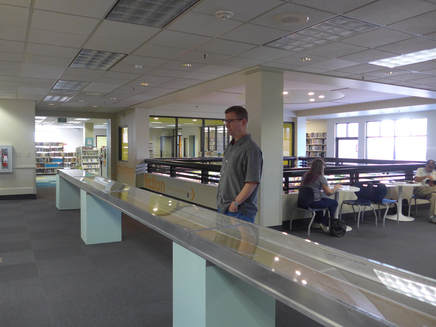
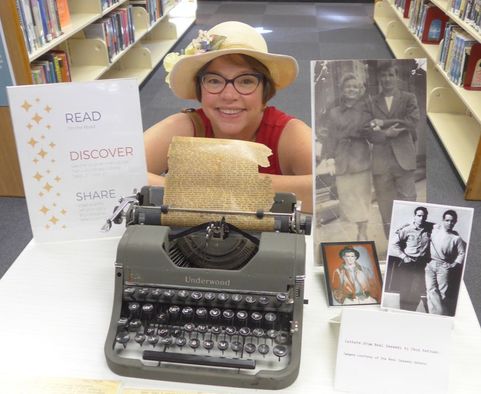

 RSS Feed
RSS Feed